A Traveller's Guide to Medieval Chester
Article about Chester, England for small group educational tours for senior couple and mature solo travellers to England. Articles to support your travel plans to explore England, Scotland, Wales and Ireland.
5 Dec 19 · 9 mins read

A Traveller’s Guide to Medieval Chester
In northern England, right near the Welsh border you will find one of the prettiest and most historically rich cities in all of England: Chester. The capital of the county of Cheshire, Chester was originally founded as a Roman fort and has over 2000 years of history, but it is best known as a medieval city due its well-preserved Tudor architecture and observable legacies of its medieval past.
In this article we will discover the Chester of the Middle Ages and learn about Chester’s time as a thriving port city, trading centre and religious hub. We will outline the wealth this brought to the region and how it transformed Chester into one of the most powerful and important cities in Britain. As well as this, the article will provide a sense of what life was like for townspeople in this time and how this period has left a mark on the city today. The article draws on information from Simon Ward’s book Chester: A History as well as articles linked throughout.
This is part of our collection of England-related articles that we share as useful background information before you go on a England tour with us, or to simply help you as you firm up your travel plans. All of those articles can be found here.
Travellers who have a particular interest in the Middle Ages may be interested in our previous articles on the topic: Village Life in Medieval Britain, Understanding British Churches and Medieval Britain: A Definitive Guide.
Chester’s Roman Beginnings
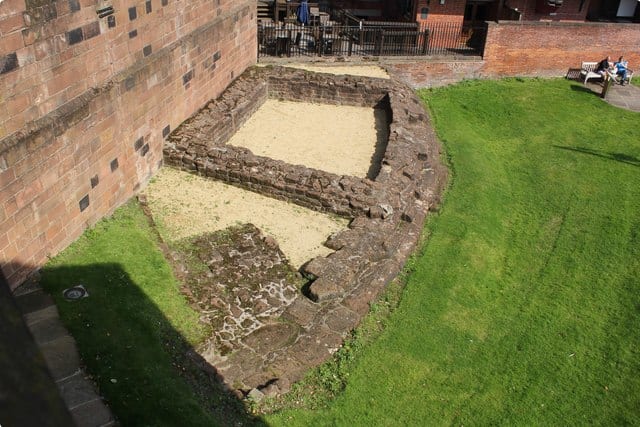
Recent archaeological discoveries suggest that, contrary to popular belief, the Romans were not the first people to settle in what is now Chester. However, it is thought that the Romans must have discovered the site by the late 50s when Suetonius Paulinus, a Roman governor, was waging a campaign in Wales that culminated in the attack and conquering of Anglesey. It is presumed that Chester would have appealed to the Romans because of its strategic location. It had a fine harbour, a riving crossing and offered the perfect position from which one could defend one’s self.
A decade or so later, in 74 or 75 AD, a Roman legion, II Adiutrix pia fidelis, established their legionary fortress at the site and named it Deva after either the River Dee or the goddess of the Dee. During this time the Roman province of Britannia was fast expanding and after having arrived on the beaches of Kent, the Romans needed to find a base near a river that would allow them to easily transport goods and engage in trade. Soon, a civilian settlement grew around the Britannia fortress, made up of traders and their families. Today in Chester you can visit the remains of the Chester Roman Amphitheatre, which is the largest known amphitheatre in Britain and would have been used for entertainment purposes and military training after it was built in the 1st century. Only about two-fifths of the oval amphitheatre is visible today and it is theorised that it was abandoned around 350 AD.

By 410 AD, the Romans had effectively withdrawn from Britain and so had abandoned their fortress, ampitheatre and bathhouses in Deva. The population of Chester collapsed and there is scant evidence to piece together what the next few years held for Chester. The site did not disappear completely and there is evidence of some trade during this time but the Anglo-Saxons resettled the town. In the early 10th century, Aethelflaeda, the daughter of the Saxon king, Alfred the Great, established Chester as a burh or defended settlement, refortifying its walls. The walls were rebuilt so effectively that the remain today and you can admire sections of Aethelflaeda’s wall if you visit Chester.
Early Medieval Chester
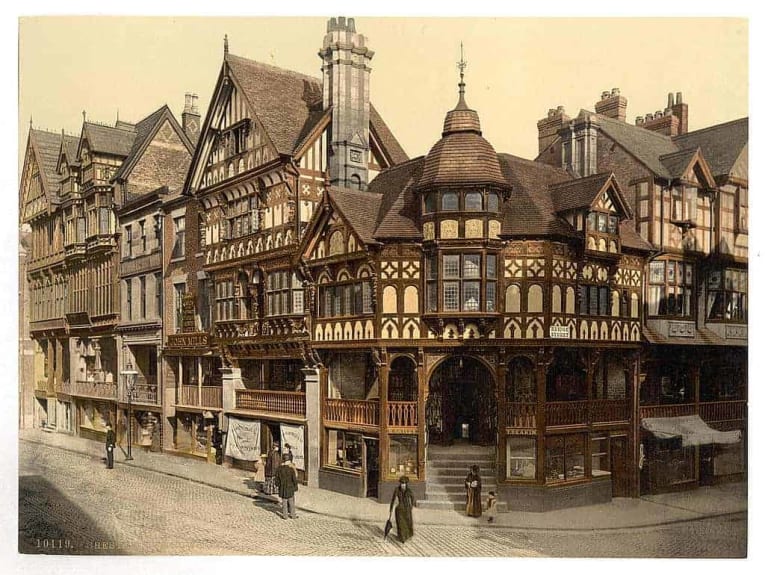
It is said the medieval history of Chester begins in 907 with the re-fortification of the site. In 1066 with the Norman Conquest and the Harrying of the North, the Normans took Chester, which by then was a wealthy and populous city. Significantly, Chester was home to the most prolific mint in the country during the 10th century. In 970, there were 20 moneyers working there. The productivity of the mint suggests that Chester was an important site for kings and the amount of silver coins being produced indicates that there must have been a favourable balance of trade coming into the city.
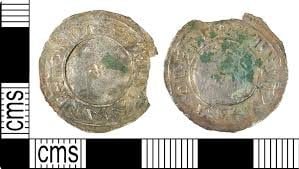
Prior to William I’s conquest of Chester, the city had a reputation for being a centre for the export of valuable commodities. The most important trade relationship was with Dublin, which was the biggest port in the Irish sea and as such, a wealthy Viking town. By the mid 10th-century, Chester exported things like salt, for the preservation of fish and the treatment of hides, cloth, metalwork and slaves to Dublin. Evidence suggests that Dublin exported goods like furs, hides and fish to Chester. Marten fur, a precious commodity due to its associations with royalty, was a high-value item and prized export in Dublin and it seems marten furs made there way into Chester in this time. All accounts suggest Chester was something of a thriving emporium prior to 1066.
With William the Conqueror’s arrival, he commissioned the building of the Chester Castle and established the Earldom of Chester, naming his nephew Hugh D’Avranche as the Earl. The new castle became a base for the earls and where they entertained the King during his visits. As a result, the castle greatly enhanced Chester’s role as a centre of military and administrative activity. During the 11th and 12th century, it was a base for royal expeditions against both the Welsh and the Irish.
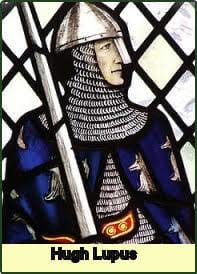
Earl Hugh commissioned the Benedictine Abbey to replace St. Werburgh’s Church in 1092 which added to Chester’s reputation as a city of ecclesiastical importance. During this time, the population remained small though the city was considered powerful and wealthy. In the late 11th century, it was thought there was around 1500 civilians living in Chester.
The Norman Earldom
In the early years of the Norman earldom, the city was tightly controlled by a bureaucracy made up of chamberlains, a reeve and a sheriff. However, as time went on, the people of Chester gained more independence to manage their own affairs and had the right to do things such as hold fairs and markets and pursue trade in Dublin. In the 13th century, Ireland remained an important trading partner. While Chester was no doubt a prosperous city, trading was central to its economy, particularly trade with Ireland. The landscape around Chester was not conducive to producing cereals, which were imported from Ireland along with other foodstuffs and animal pelts, especially marten. As well as this, Chester had other international links, with ships coming from Gascony, Aquitaine, Spain and Germany bearing wine, which was considered a very valuable import. This trading activity was evident from the many markets and fairs held in the city as it became a major regional centre.

In the 12th century, the leather industry thrived in Chester as did artisans and potters making wares for local use and to export. Milling also became increasingly important. By the mid-13th century there were six profitable mills around the city.
With Norman conquest there were many changes to the religious life of Chester. Many parish churches were founded, including St Mary’s, St Michael’s and St Martin’s, and regular monasticism was established in the city. The 13th century saw the arrival of the friars, who invested themselves in the community, teaching and caring for the poor. Friaries began to prosper and as they became more wealthy, friars began building many lovely churches. Meanwhile, the Benedictine Abbey became a ‘hive of building activity’, according to Ward. This combination meant that Chester’s landscape was completely reshaped but also indicates the wealth in Chester at the time and the resources that different groups were able to get their hands on.
Medieval Sites in Chester
Today, Chester’s medieval charm endures and there are plenty of places to visit where you can feel as if you’re stepping back 800 years ago. If you want a taste of Medieval Chester, you don’t have to look too hard.
Chester Castle
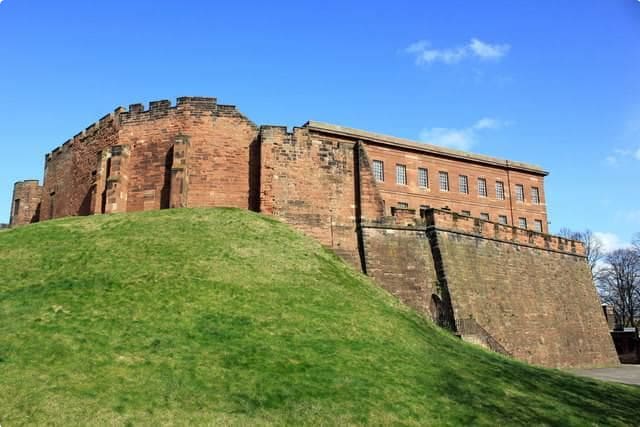
As mentioned, William the Conqueror ordered that Chester Castle be built in 1070. Once a mighty fortress, you will find the remains of the castle on a low hill in a bend of the River Dee, right near the Welsh border. The original structure would have been a motte-and-bailey castle with a wooden tower but in the 12th century, an outer bailey was added and the structure was rebuilt in stone. The stone gateway to the inner bailey is known as the Agricola Tower. On the first floor is the chapel of St Mary de Castro. The paintings on the wall in the chapel date back to 1220 but were only discovered in 1980s when whitewash was removed from the walls.
Beeston Castle
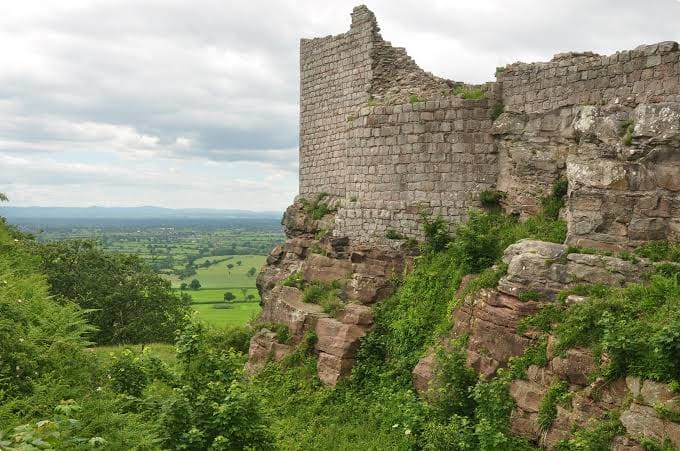
One of England’s most dramatic and jaw-dropping ruins, Beeston Castle dates back from 1125 and was founded by Ranulf, the sixth Earl of Chester after he returned from the Fifth Crusade. It was often referred to as the Castle on the Rock because you will find it perched on a rocky sandstone crag some 100m above the Cheshire Plain. Legend has it that the royal treasure of Richard II is buried somewhere on the castle’s grounds but despite many searches, nothing has ever been found.
Chester Cathedral
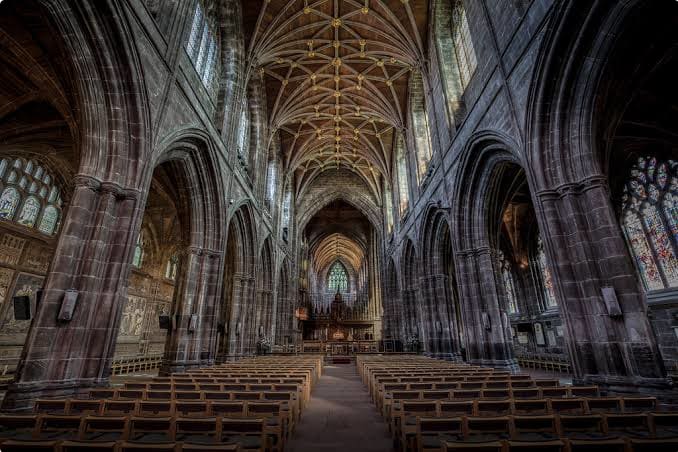
Originally the site of Earl Hugh’s Benedictine Abbey, founded in 1092, the church was built in the Romanesque or Norman style, traces of which can still be felt today. From 1250, it was rebuilt as a dramatic Gothic cathedral, a process which took almost 300 years. During its time, the Chester Cathedral has survived despite turbulent religious history in the region, such as being defaced by puritans during the time of Thomas Cromwell. Evidence of these periods of vandalism remain today but the Cathedral still retains its sense of glory and grandeur, with many buildings having been carefully restored. Since 1541, it has been the seat of the Bishop of Chester.
The Rows
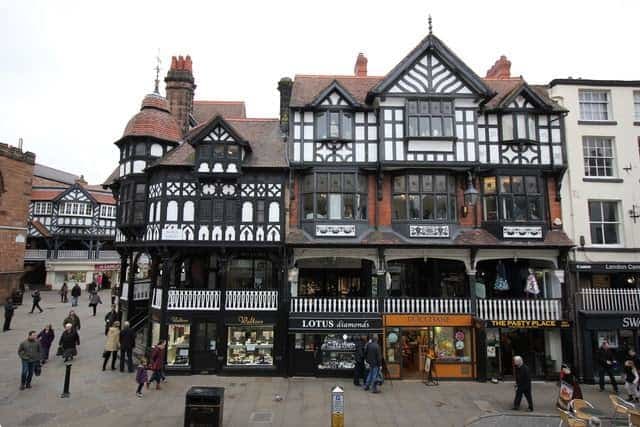
Arguably the most popular and most photographed site in Chester is The Rows. One of Chester’s most unique and distinguishing features, The Rows refers to a series of half-timbered galleries which form a row of shops above those at street level and run along four main streets in Chester: Watergate Street, Northgate Street, Eastgate Street and Bridge Street.
The Rows combine a mixture of different architectural styles including Medieval, Georgian and Victorian but the first written record about The Rows comes from the late 13th-century. During this time, the buildings in Chester were built with a stone ‘undercroft’ (a cellar or storage room) with a medieval half-timbered building constructed above that. Later in the 18th-century, the medieval building was re-fronted in brick and then these brick frontages were decorated in the ‘mock Tudor’ style you see today.
Ince Manor
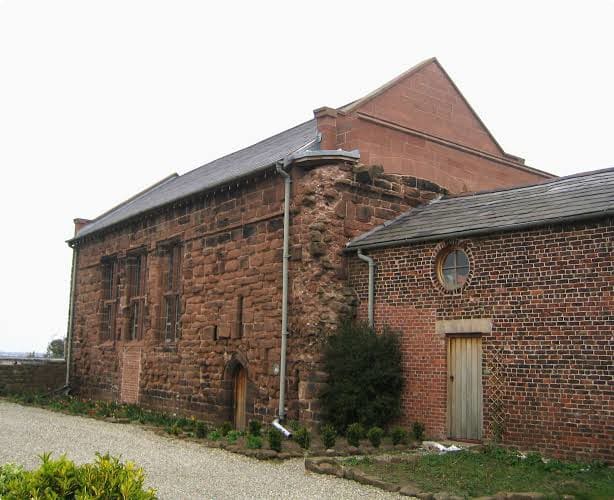
Ince Manor is a former monastic grange and one of the earliest recorded properties of St Werburgh’s Abbey. There is a record of it in the Domesday Book and King Edward I is known to have stayed there in 1277. Despite the dissolution of the monasteries, the grange remain in church ownership until the mid 16th-century. The buildings are now privately owned but you can still enjoy their medieval architecture.
Following the end of the Middle Ages, Chester’s fate took a dramatic turn. The silting of the River Dee, the Civil War and the dissolution of the religious houses by Henry VIII would all impact the city’s importance and prosperity. We will examine what became of Chester in this period in a later article.
One of Great Britain’s most iconic locations, the walled city of Chester is seeped in history. It has been a centre of much military, religious and commercial action throughout the centuries and Chester’s complex and interesting beginnings have made it the city it is today. A walk through Chester’s city centre is enough to transport you back to the Middle Ages and visiting the variety of heritage attractions in the area is sure to give you a deeper insight into how Chester became as prosperous as it did in the period we have looked at in this article.
If this article has piqued your interest in Chester, you may want to check out our Odyssey Traveller tours that include a stop to the famous walled city, including our Roman Britain tour, our Gardens of Britain tour or Britain’s history through its canals and railways. Odyssey’s small group tours are fully escorted – accompanied for the whole tour by an Odyssey Program Leader with the help of a local guide – and are especially designed for senior travellers.
Related Tours
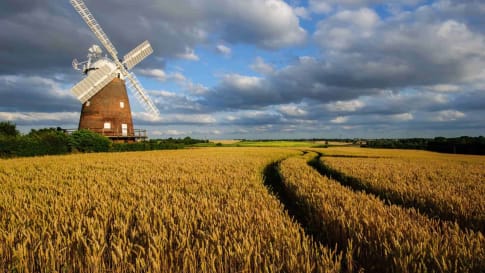
23 days
AprAgrarian and Industrial Britain | Small Group Tour for Mature Travellers
Visiting England, Wales
A small group tour of England that will explore the history of Agrarian and Industrial period. An escorted tour with a tour director and knowledgeable local guides take you on a 22 day trip to key places such as London, Bristol, Oxford & York, where the history was made.
From A$17,275 AUD
View Tour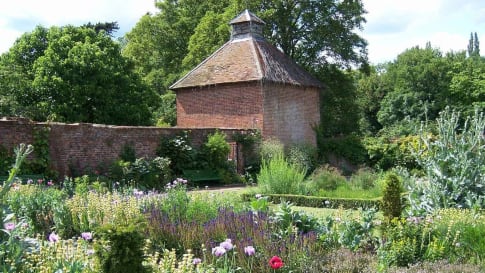
16 days
JunBritish Gardens Small Group Tour including Chatsworth RHS show
Visiting England, Scotland
From A$16,895 AUD
View Tour
22 days
Apr, SepSmall group tours Medieval England
Visiting England
A small group tour of England focused on Medieval England and Wales. Spend 21 days on this escorted tour with tour director and local guides travelling from Canterbury to Cambridge, passing through Winchester, Salisbury, Bristol, Hereford and Norwich along the way. Castles, villages, Cathedrals and churches all feature in the Medieval landscapes visited.
From A$14,665 AUD
View Tour22 days
AugRoman Britain
Visiting England
On this small group tour explore with a tour director and local guides the world of Roman Britain. The Romans occupied Britain for some 400 years and left behind a lasting legacy from roads Hadrian's wall to Roman Baths many are UNSECO World heritage listed.
From A$14,545 AUD
View Tour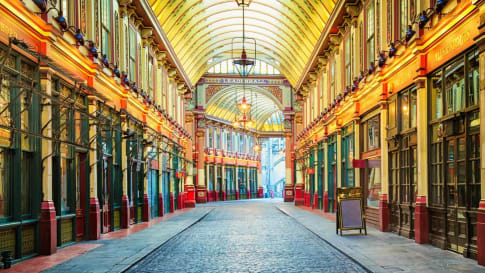
21 days
Sep, JunQueen Victoria's Great Britain: a small group tour
Visiting England, Scotland
A small group tour of England that explores the history of Victorian Britain. This escorted tour spends time knowledgeable local guides with travellers in key destinations in England and Scotland that shaped the British isles in this period including a collection of UNESCO world heritage locations.
From A$15,880 AUD
View Tour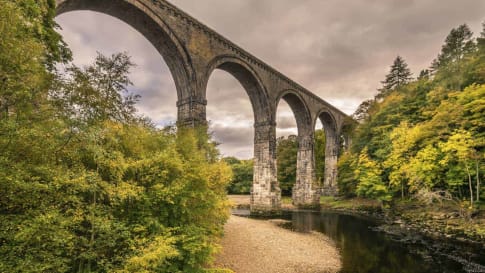
23 days
Oct, Apr, SepCanals and Railways in the Industrial Revolution Tour | Tours for Seniors in Britain
Visiting England, Scotland
A small group tour of Wales, Scotland & England that traces the history of the journey that is the Industrial revolution. Knowledgeable local guides and your tour leader share their history with you on this escorted tour including Glasgow, London, New Lanark & Manchester, Liverpool and the Lake district.
From A$17,860 AUD
View TourRelated Articles

English Village History
An English Village history. Prepared for mature and senior travellers, couples or solo traveller considering joining a small group tour of England's villages.
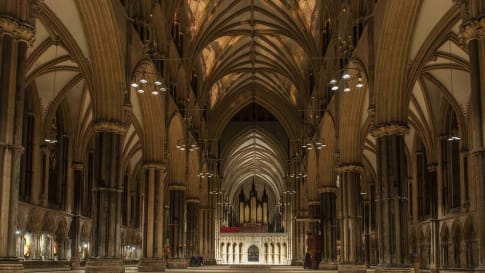
Landscapes of Medieval England
Article about Medieval England supporting Britain's history from the Roman's to Queen Victoria and the industrial revolution.

Lumps and Bumps: How to Read the British Landscape
The British landscape has been worked and re-worked. It is secrets of this palimpsest landscape is revealed through drainage patterns and prehistoric features all the way through to the modern day. These small group tours for mature and senior travellers examine the landscape from the Neolithic, to Roman, through the seven ages of Britain in walking tours and history tours of Britain.

Medieval British Village Life: The Definitive Guide for Seniors
Life in the Medieval British Village In a previous article, we looked at the icons of the British village–the pub and the cottage–and looked at their history and evolution from Roman and Norman times. In…

Studying Gargoyles and Grotesques: The Definitive Guide for Travellers
Article to support world travellers since 1983 with small group educational tours for senior couples or mature solo travellers interested in British and European history.

Touring England's villages
Touring England’s villages For many travellers, London is synonymous with England. This lively, cosmopolitan capital is a must see, of course, but there is more to England than booming cities and industrial centres. Instead, what…




